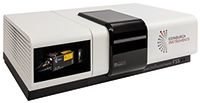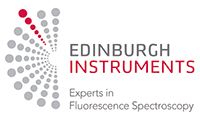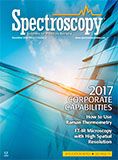Edinburgh Instruments
Company Description
Edinburgh Instruments has become one of the world's largest manufacturers of leading edge spectroscopic instrumentation and gas detection solutions.

Edinburgh Instruments has over 30,000 sq. ft. of manufacturing and office space just outside Edinburgh, where it employs over 75 people. The company is involved in the development, manufacture, and sale of a wide range of high technology products for the scientific research and industrial markets. Product ranges include lasers and analytical spectrometers supplied by the Photonics Division and gas detection and monitoring products supplied by the Sensors Division.
Chief Spectroscopic Techniques Supported
- Fluorescence spectroscopy
- Fluorescence lifetime
- Phosphorescence lifetime
- Luminescence
- Photoluminescence
- Transient absorption spectroscopy
Markets Served
Academia and fundamental research in a wide range of fields including photochemistry, photobiology, various applications in life science and physical chemistry as well as industrial applications such as food science, environment/water monitoring, and solar cells.

Major Products/Services
Research grade fluorescence spectrometers, analytical spectrofluorometers, dedicated fluorescence lifetime spectrometers, pulsed diode lasers and LEDs, terahertz, and CO2 gas lasers.
Facility
Edinburgh Instruments are part of the Techcomp Europe group, with all manufacturing facilities in Scotland. Sales, service, and applications facilities are located around the world.

Edinburgh Instruments
2 Bain Square, Kirkton
Campus, Livingston, EH54
7DQ, United Kingdom
TELEPHONE
+44 (0)1506 425 300
FAX
+44 (0)1506 425 320
WEB SITE
NUMBER OF EMPLOYEES
USA: 2
UK: 75
YEAR FOUNDED
1971

Newsletter
Get essential updates on the latest spectroscopy technologies, regulatory standards, and best practices—subscribe today to Spectroscopy.
Scientists Use Water and Light to Uncover Honey Adulteration
July 30th 2025In a 2025 study, Indian researchers demonstrated that combining near-infrared (NIR) spectroscopy with aquaphotomics enables rapid, non-destructive detection of adulterants in honey by analyzing changes in water’s spectral behavior. Using chemometric models, they accurately identified and quantified six common adulterants, offering a powerful tool for food authenticity and quality control.
Scientists Use AI and Spectroscopy to Detect Fake Honey in Bangladesh
July 29th 2025Researchers in Bangladesh have developed a rapid, non-destructive method to detect honey adulteration using UV-Vis-NIR spectroscopy paired with machine learning. Their findings could protect consumers and support food quality enforcement.